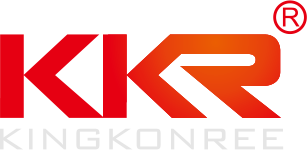 KingKonree - Solid Surface Manufacturer of Sanitary Ware, Solid Surface Countertops & Sheets for over 25 years, innovation in moulding and thermoforming
KingKonree - Solid Surface Manufacturer of Sanitary Ware, Solid Surface Countertops & Sheets for over 25 years, innovation in moulding and thermoforming
solid surface materials & other cast polymers to 2016
This study analyzed the foundry polymer industry in the United States.
It provides historical demand data for 2001, 2006 and 2011, and forecasts for 2016 and 2021 by material. (e. g.
Marble, resin), product (
Solid surface materials, gels
Coated Composites, Engineering Stones), end use (e. g. , countertops)and US region.
The study also considers the market environment factors, analyses the industry structure in detail, evaluates the company\'s market share, and analyses the industry participants.
Demand growth 5.
By 2016, the annual demand for foundry polymers in the United States is expected to increase by 5%.
3% a year to 248 million square feet.
Real estate completion will rebound sharply from the downturn in 2011, which will push up.
However, even in 2021, the number of new houses will not reach the peak level of 2006 before the recession.
Residential renovation and maintenance departments will continue to account for the majority of the demand for cast polymers, so residential renovation activities will rise.
The recovery of the non-residential construction expenditure market will further boost the demand for foundry polymers.
The use of cast polymers to replace more traditional surface materials (such as laminates) with greater market penetration will further facilitate demand.
In most applications, foundry polymers provide low maintenance requirements, as well as resistance to damage caused by stains, moisture, impact and other wear.
Engineering stone will show the fastest casting polymer gain. It is expected that engineering stone will achieve the fastest growth in demand for foundry polymer by 2016.
Residential consumers will continue to be attracted to this material because it has performance advantages and is designed to be similar. -
End natural stone, but with more color options and greater durability.
Engineering stone demand in the non-residential construction market will be supported by designated personnel seeking materials that are not affected by biological pollutants and require minimal maintenance.
Solid surface materials will continue to dominate, and solid surface materials will continue to occupy the largest share of casting polymer demand, accounting for 41% of the total market in 2016.
Although solid surfaces benefit from cost advantages, increased competition from natural and engineering stones will limit returns.
Many consumers believe that stone is superior to solid surface in performance and aesthetics. Demand for gel-
Coated Composites(e. g.
To cultivate marble.
It will be supported by its continuous application in non-residential buildings.
Residential bathroom trends will also drive up. (
More and more elaborate designs)
A gel area
Coated composite materials are most commonly used. For more info.
Company Info
Address:Room No. 2408-2508, Building 5A, Longguang Jiuzuan, Longhua District, Shenzhen, China
Zip Code: 518131
Tel: +86 (0)755-82875700
Fax: +86 (0)755-82875921

